
Search
Multidimensional Poverty and the Risk from COVID-19
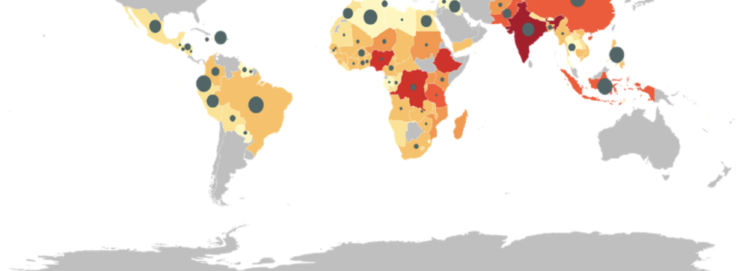
As of April, the COVID-19 pandemic (1) is just be- ginning to spread to developing regions, and ad hoc emergency responses are currently being developed and applied in rapid fashion. These often involve targeted food or cash programmes directed at the poorest and those who are most vulnerable. However, a major obstacle faced by many governments at the moment is how to identify the poorest. One way of doing so is to apply the global Multidimensional Poverty Index (MPI) – which both makes good use of available data and is a well-established concept of poverty.
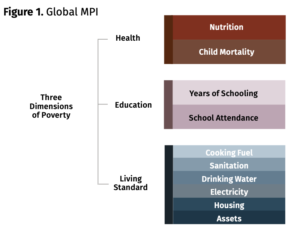 Using ten MPI indicators of acute poverty across three dimensions of health, education, and living standards (see Figure 1), this index identifies the ‘MPI poor’ – those who are simultaneously deprived in one third or more of the global MPI indicators – and the ‘severely MPI poor’ – those who are simultaneously deprived in at least one half of the indicators. Across the globe, 1.3 billion people are MPI poor, 600 million severely so.(2)
Using ten MPI indicators of acute poverty across three dimensions of health, education, and living standards (see Figure 1), this index identifies the ‘MPI poor’ – those who are simultaneously deprived in one third or more of the global MPI indicators – and the ‘severely MPI poor’ – those who are simultaneously deprived in at least one half of the indicators. Across the globe, 1.3 billion people are MPI poor, 600 million severely so.(2)
COVID-19 risk indicators
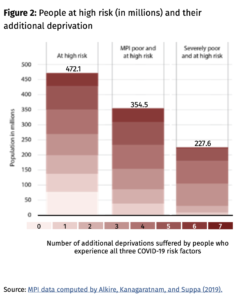 Among the ten global MPI indicators, nutrition, water, and cooking fuel are particularly relevant in the context of the ongoing pandemic. They are COVID-19 risk factors. Unsafe drinking water and undernutrition are strongly associated with weakened immune systems and morbidity – implying an increased risk of severe or fatal disease courses. Deprivation in clean cooking fuel is associated with indoor air pollution and acute respiratory infections – implying an increased risk from COVID-19, which attacks the lungs. Across 5.7 billion people living in 101 developing countries, 62.6% or 3.6 billion are deprived in at least one of the three COVID-19 risk indicators – they are at risk. Moreover, 472 million people in the develo- ping world are deprived in all three COVID-19 risk factors at the same time – they are at high risk (see Figure 2). Most of them (355 million) are MPI poor, and nearly half (228 million) are severely MPI poor.
Among the ten global MPI indicators, nutrition, water, and cooking fuel are particularly relevant in the context of the ongoing pandemic. They are COVID-19 risk factors. Unsafe drinking water and undernutrition are strongly associated with weakened immune systems and morbidity – implying an increased risk of severe or fatal disease courses. Deprivation in clean cooking fuel is associated with indoor air pollution and acute respiratory infections – implying an increased risk from COVID-19, which attacks the lungs. Across 5.7 billion people living in 101 developing countries, 62.6% or 3.6 billion are deprived in at least one of the three COVID-19 risk indicators – they are at risk. Moreover, 472 million people in the develo- ping world are deprived in all three COVID-19 risk factors at the same time – they are at high risk (see Figure 2). Most of them (355 million) are MPI poor, and nearly half (228 million) are severely MPI poor.
Regional disaggregation
Across six major world regions, sub-Saharan Africa faces the greatest burden in multidimensional poverty and highest risk from COVID-19 (Table 1). Almost 90% of its population, or 882 million people, have at least one COVID-19 risk factor. More than 218 million (21.9%) are at high risk to COVID-19 – they are simultaneously affected by all three COVID-19 risk factors. More than one in five people (21.7%) are MPI-poor and at high risk, and 17% are severely poor and at high risk – an unparalleled prevalence of critical vulnerability, compared to rates between 2.2% for South Asia and 2.7% for the Arab States. Table 1 provides the population-weighted aggregates by major geographic region.
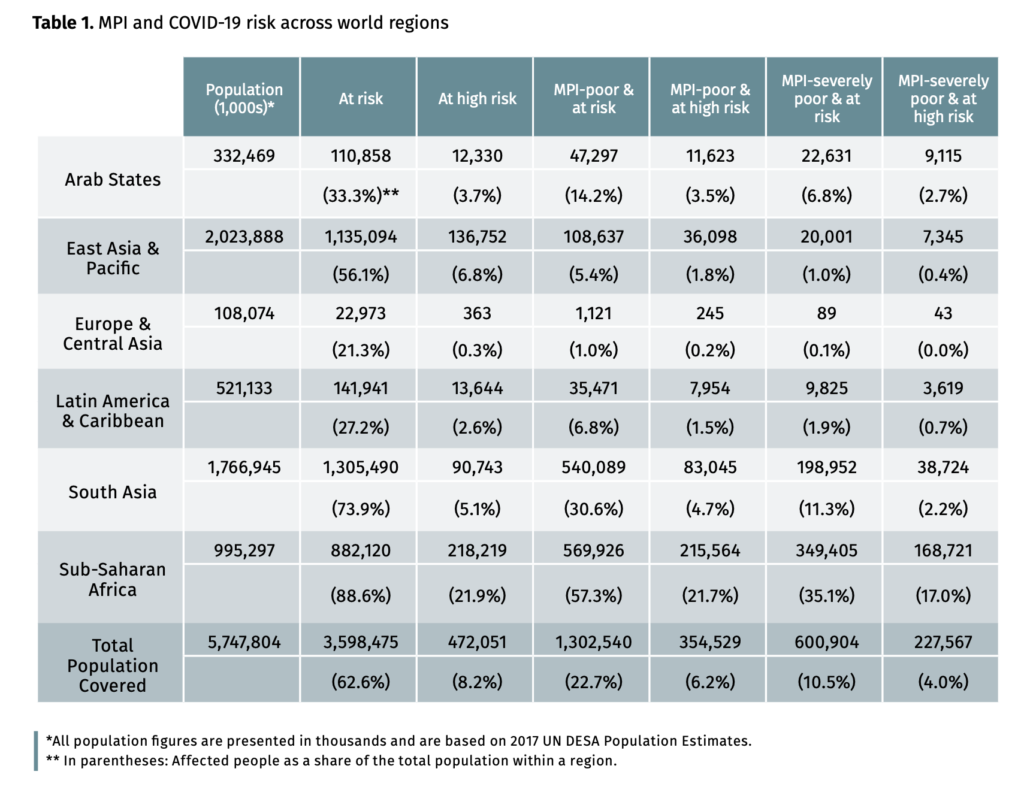
At the time of writing, COVID-19 deaths are being reported for many countries for which global MPI data are available – Figure 3 depicts those from our first global briefing on 6 April. One month later the number of COVID deaths has passed 1000 in seven countries covered by the global MPI, and together these countries have suffered 31,000 deaths out of the global total of 253,000. Unfortunately, the underlying growth rate of COVID-19 deaths is increasing rapidly in Latin America and the Caribbean and across sub-Saharan Africa, South Asia, and East Asia. The top ten countries with the highest number of MPI poor people at high COVID-19 risk are India (60 million), Nigeria (39 million), Ethiopia (38 million), Democratic Republic of Congo (32 million), China (16 million), Tanzania (12 million), Indonesia (11 million), Pakistan (10 million), Afghanistan (10 million), and Uganda (9 million).
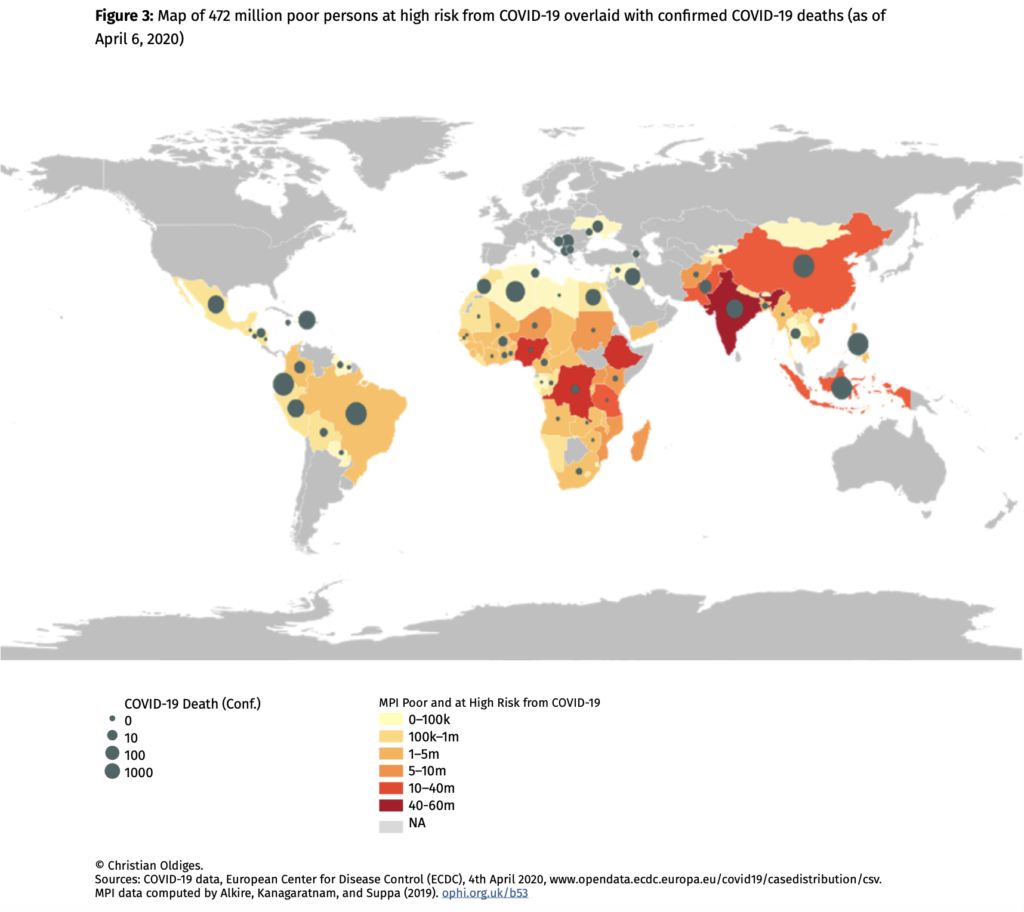
Country focus: Nigeria
With a population of almost 200 million, Nigeria is the most populous country in Africa. According to the most prominent monetary poverty measure ($1.90 a day), Nigeria accounts for the highest number of monetary poor people globally. In terms of the global MPI for Nigeria, based on 2016–17 figures, about 100 million people are multidimensionally poor. As Figure 4 below shows, across the 37 Nigerian States, several are at high risk to the unfolding spread of COVID-19. More than 4.1 million people in Borno State alone are multidimensionally poor and at high risk, with similar numbers in Katsina (4 million) and Kano (3.8 million). With COVID-19 cases confirmed in Abuja, Kaduna, and Bauchi, the fear is that if COVID-19 spreads to the poorest states of Northern Nigeria, it would have tremendous human cost.
This rapid overview is a call for urgent action.The global MPI database provides a widely used source of information that can be employed for immediate COVID-19 responses such as regional targeting. Governments, UN agencies, the private sector, and civil society organisations alike are encouraged to make use of the available data in order to protect those most at risk in the unfolding pandemic.
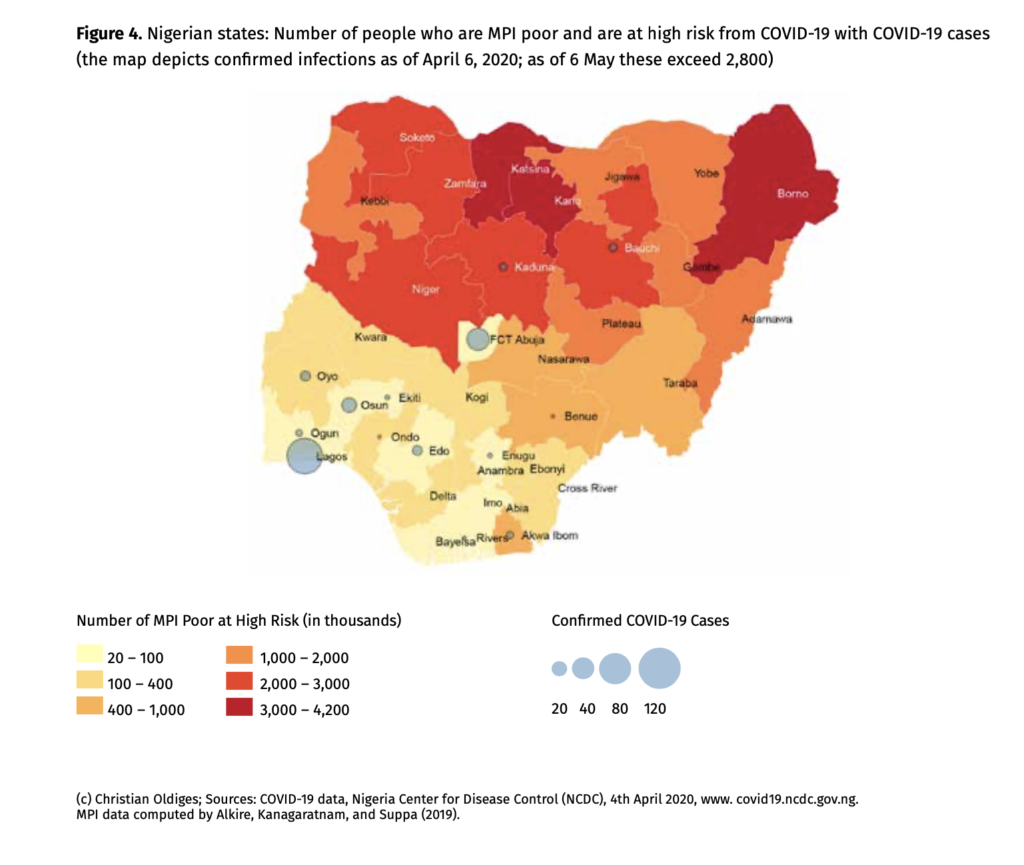
(1) This article is an updated version of Alkire, S., Dirksen, J., Nogales, R., and Oldiges, C. (2020). ‘Multidimensional poverty and COVID-19 risk factors: A rapid overview of interlinked deprivations across 5.7 billion people’, OPHI Briefing 53, Oxford Poverty and Human Development Initiative, University of Oxford.
(2) Data used to compute the global MPI are from 2007–2018, though 5.2 billion of the 5.7 billion people covered and 1.2 billion of the 1.3 billion multidimensionally poor people identified are captured by surveys from 2013 or later. Unfortunately, due to survey limitations, these data do not cover other key COVID-19 indicators such as joblessness, nor do they capture the ‘newly’ poor – for example children recently out of school due to closures or recent rises in undernutrition.
This article was published in Dimensions 9.
















